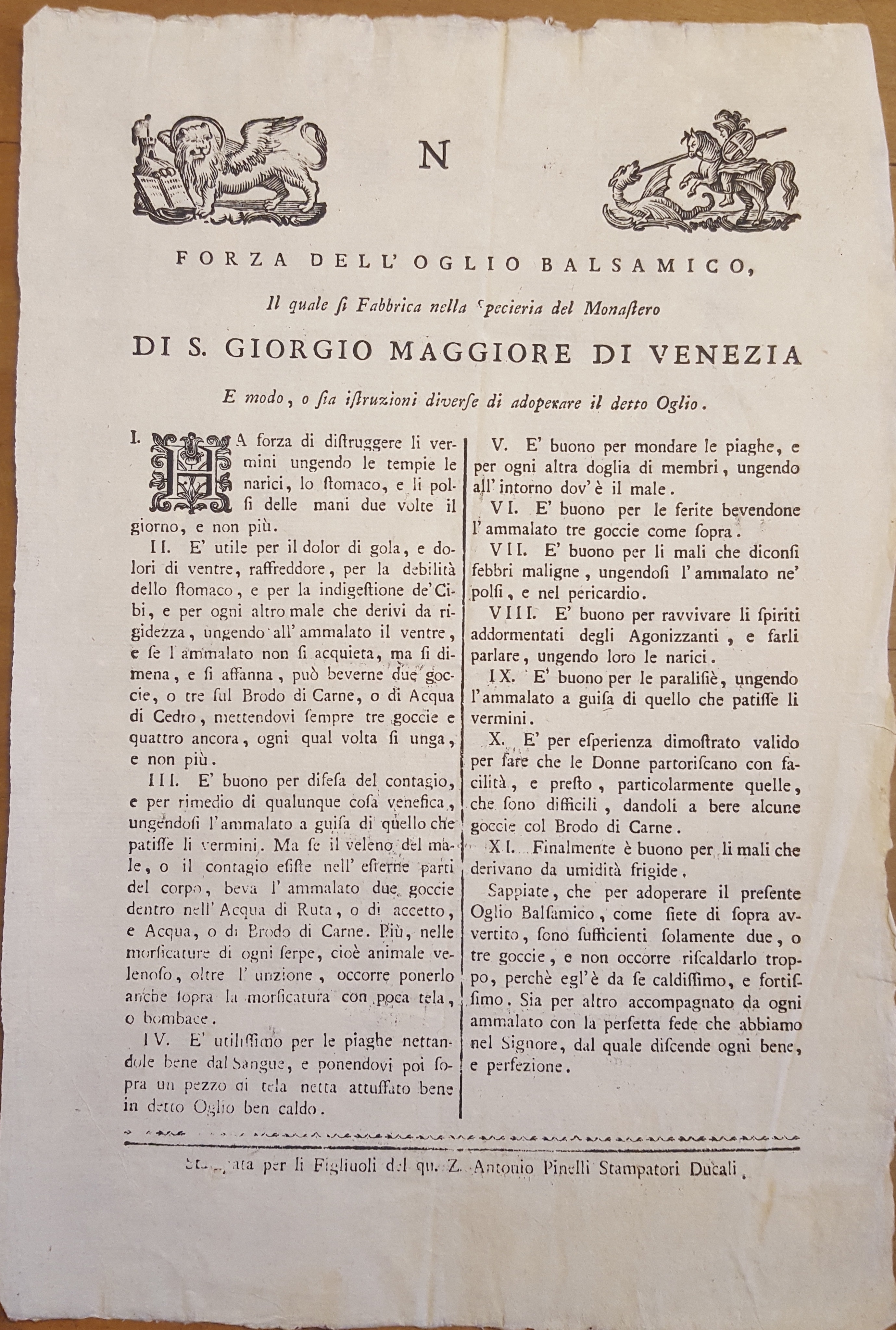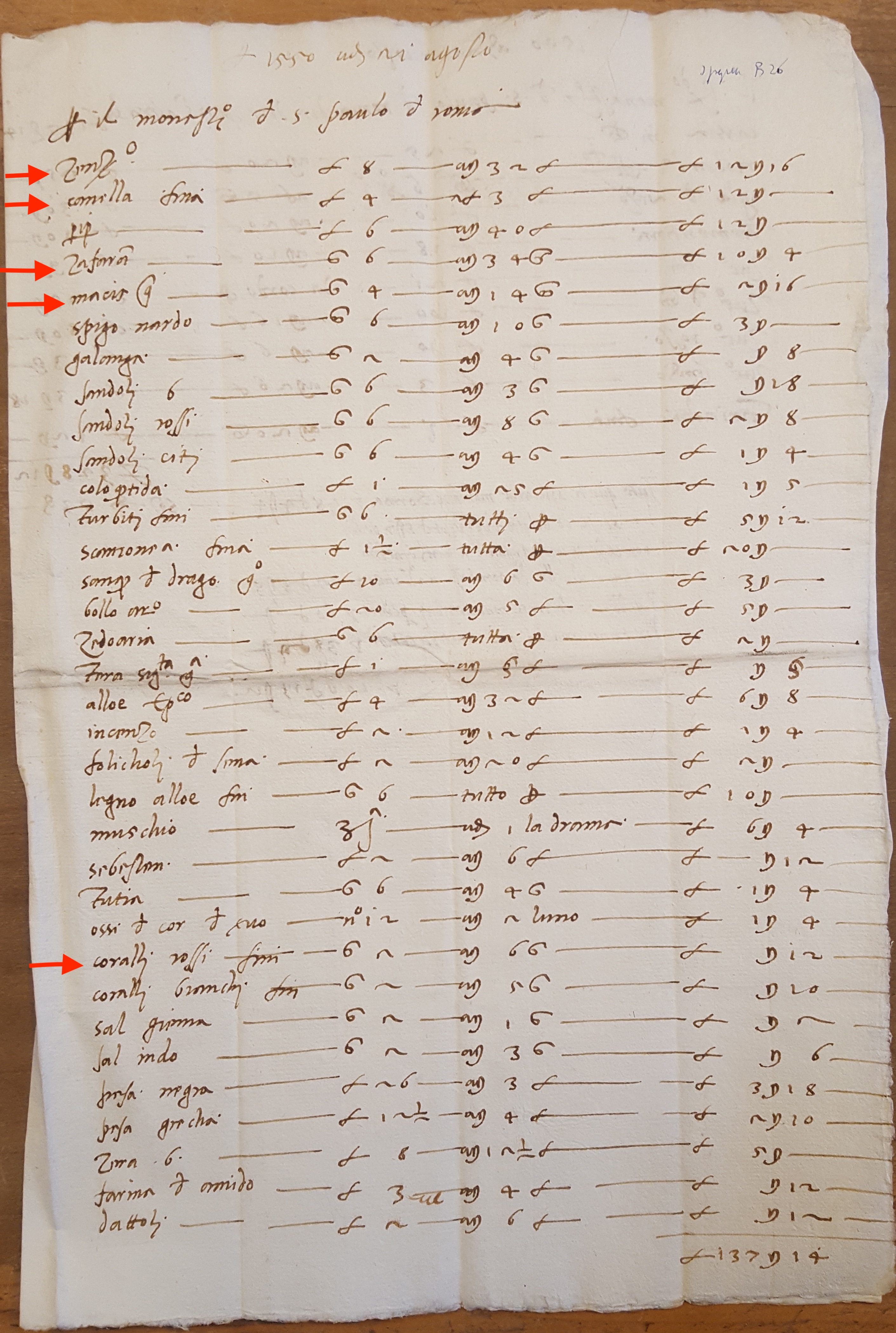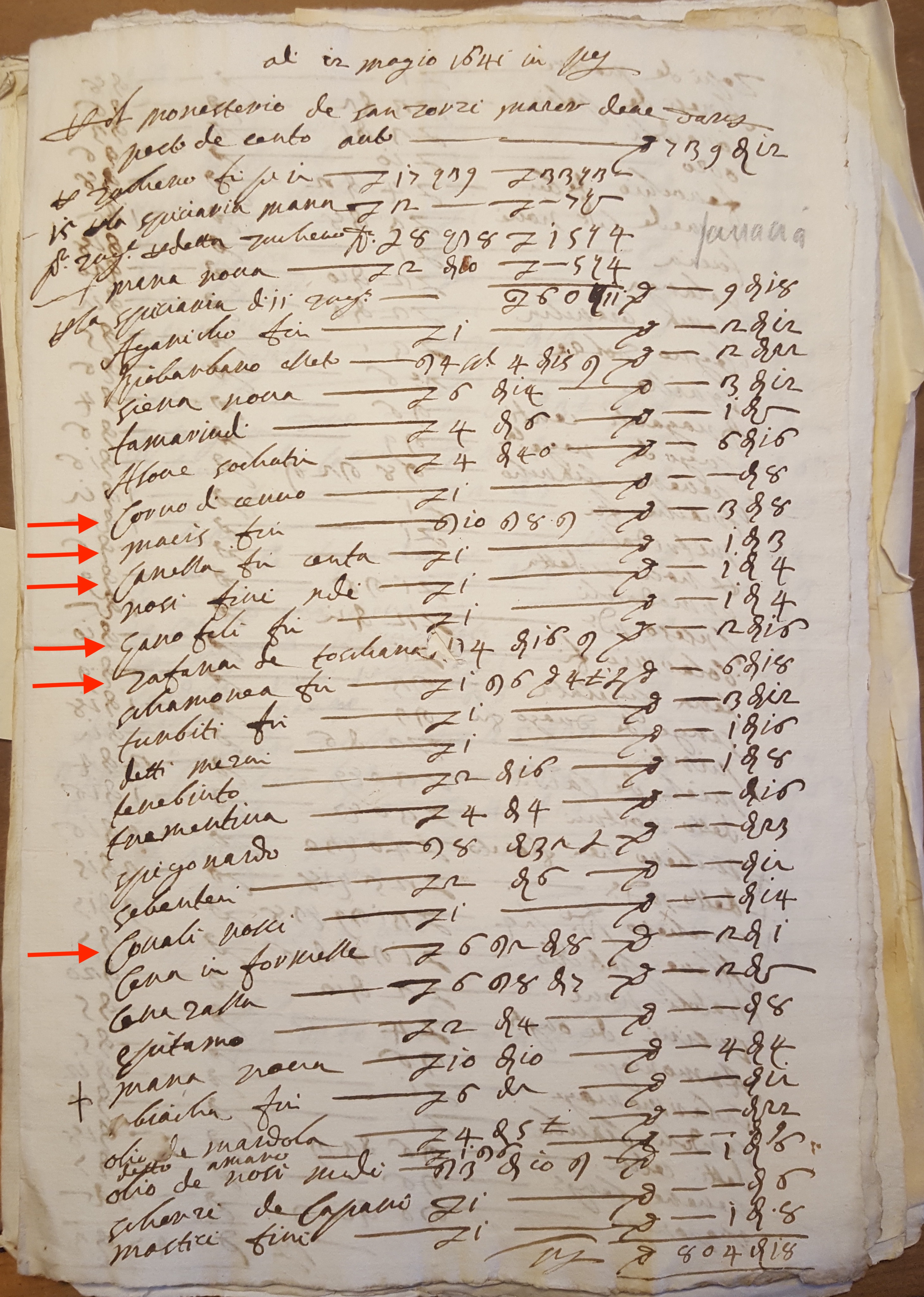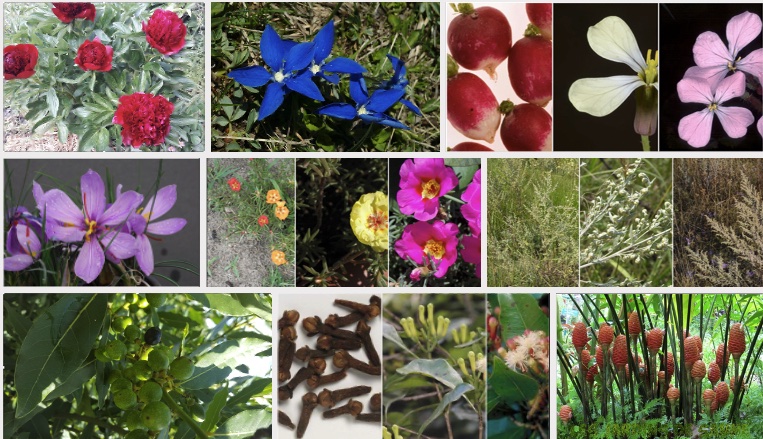Sgiorgiom 3
The Balsamic Oil of S. Giorgio Maggiore

The Benedictines of S. Giorgio were renowned for producing the Balsamic Oil of S. Giorgio, with a recipe inspired by the Olio di Santa Giustina in Padua. It was applied externally to treat sores and wounds, and internally for sore throats, gastric disorders and as a vermifuge. Each package was sold together with a printed sheet explaining its therapeutic indications.
ASV, San Giorgio Maggiore, b. 26, 1529
Advertising bill with posology for the Balsamic oil of S. Giorgio Maggiore. Sheets like this accompanied the sale of any small bottle of it.
Local and non-local plants/substances in the Balsamic Oil of S. Giorgio Maggiore
The main ingredient of the ointment of S. Giorgio was the oil produced from the olives that the Benidictines cultivated around the Monastery.
The Balsamic Oil of S. Giorgio Maggiore was obtained by macerating about 60 substances in olive oil, mostly local herbs - that the Benedictines cultivated in their vegetable garden and in other gardens in Venice and in the Terraferma - and a few exotic vegetables, that they purchased from druggists and spices merchants.
The following is a sample of the ingredients of S. Giorgio Balsamic oil, some of which (marked with * ) are now acknowledged by the European Medical Agency (EMA) as having medicinal properties. Non-local plants/herbs are marked by two asterisks (**).
- leaves of abrotano (Artemisia abrotanum L.*, wormwood (Artemisia absinthium L.*) etc.
- roots of gentian (Gentiana L.*), peony (Paeonia L.*) etc.
- seeds of purslane (Portulaca L.), horseradish (Raphanus L.) etc.
- And more: laurel berries* (Laurus nobilis L.*), ginger (Zingiber officinale**), carnations and cloves (Syzygium aromaticum L.**); cinnamon (Cinnamomum verum J.Presl**), nutmeg (Myristica fragrans Hott.), saffron (Crocus sativus L.*) etc.;
- four animal ingredients (earthworms, powder of deer antlers, bull’s gall, red corals);
- two compound medicines (theriac and mastic oil from Pistacia lentiscus L.*, resin), and in small quantities also stone oil (petroleum, at the time common in pharmacopoeia).
Non-local plants/herbs, animal and mineral substances were bought in the lively Venetian market by the Monastery apothecary shop, as we can see from many 16th- and 17th-century purchase notes.

ASV, San Giorgio Maggiore, b. 30, August 21 1550
San Giorgio Monastery also bought exotic substances from local merchants for other Benedictines, such as for the San Paolo Monastery in Rome: zenzero (ginger), cannella fina (cinnamon), zafran (saffron), macis (nutmeg), and many others that were not ingredients for the Balm of Santa Giustina – like galanga Alpinia galanga Willd. from Asia) etc.

ASV, San Giorgio Maggiore, b. 30, May 12 1641
Purchase note for the San Giorgio apothecary shop, listing many exotic or just non-local ingredients for the Balm of Santa Giustina: corno di cervo (deer antler), macis fina (nutmeg), canella fina (cinnamon), garrofoli fini (carnations), zafaran de Toschana (saffron from Tuscany), corrali rossi (red corals).
Learn more:
- Elisa M. Cappelletti, Giuseppe Maggioni, “L’Oglio di Santa Giustina”, in La spezieria. Medicamenti e arte farmaceutica nel Veneto dal Cinquecento ad oggi (Padova: Antilia, 2002), pp. 81-107, with lists and identification of the ingredients for the Paduan recipe.
| The Garden in the Early Modern Age | The Apothecary Shop and the Laboratory | The Balsamic Oil and its Herbs |
